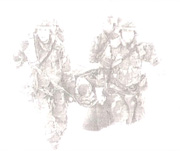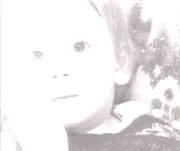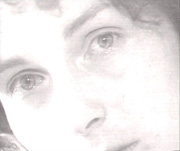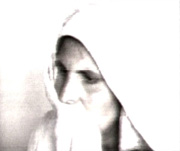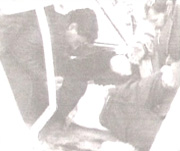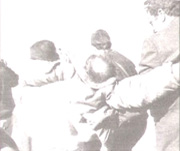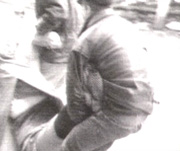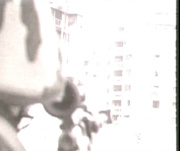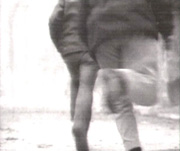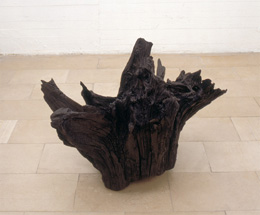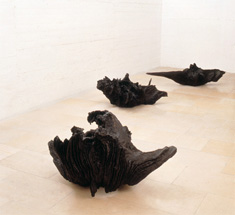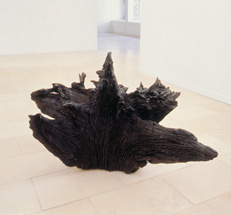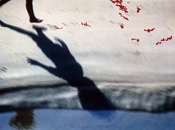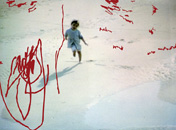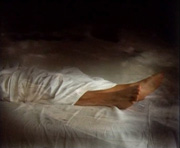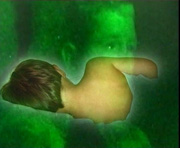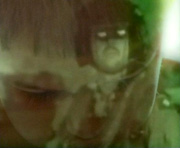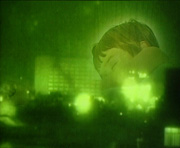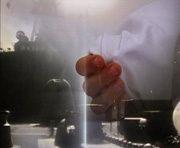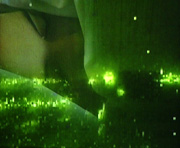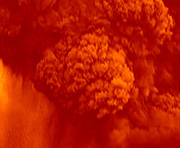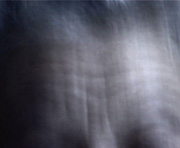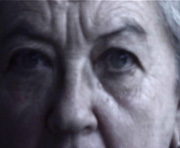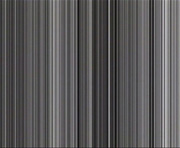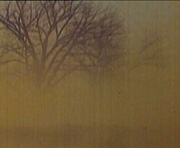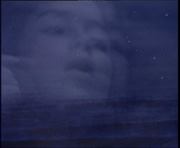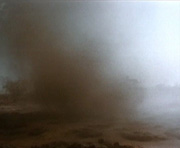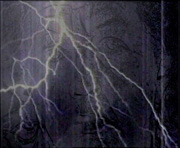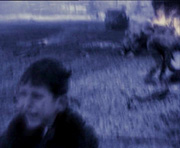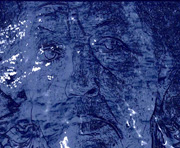Archéologie de l'architecture, de l'enfance, de l'histoire, du corps, des temps
1998 - 2005
Lamento
Lamento est un recueil de cinq textes tirés de l'ouvrage du même nom, édité par le Musée d'Art Moderne Grand-Duc Jean, (Mudam Luxembourg), à l'occasion de l'acquisition du Musée des trois sculptures de Pascal Convert autour de la question de la photographie de presse.
"Construire la durée" / "Constructing duration" / "Die Konstruktion der dauer" Georges Didi-Huberman
"Pascal Convert ou comment se dépêtrer du réel" / "Pascal Convert or how to get free of the real" /
"Pascal Convert oder wie man sich von der wirklichkeit befreit" Catherine Millet
"Images passages" / "Passageway images" / "Durchgangsbilder" Pascal Convert
"Eloge des aérolithes" / "In praise of aeroliths" / "Lobrede auf due himmelssteine" Philippe Dagen
"The Orphanage of Images",
Pascal Convert, Pascal Convert, the Alarmed Man of Art
by Bernard Stiegler
"And terrible infinity alarmed your blue eyes!"
Rimbaud
Pascal Convert shows the circuit travelled, through him, by an image, and tries to introduce us into this circuit which is itself inscribed (and held and constituted) by a process in which are formed, de-formed and trans-formed the symbolic exchanges that form the weft of our history, which already in-forms us.
The process in which an image circulates is one of psychic and collective individuation. The artist operates within this process of samplings, projections and openings, which he works and plies precisely between the psychic and the collective. In working, he shows how the individuation that is any psychic affect, as trans-formation or deformation of the person individuated, an affect of which the experience of any (religious, media or artistic) image is an instance, is inscribed in and constituted by the process of collective individuation that sustains it and is sustained by it.
The psychic does not precede the collective, or vice versa: psychosocial from the outset, this conjunction is what constitutes a relation that Simondon terms transductive, that is to say, whose terms are constituted by the relation itself. One cannot exist without the other.
Seeing an image individuates me (that is the meaning of to see); or else, I do not see it, or perhaps, I become dis-individuated, that is, in looking it, I become blind, which is a limit case of individuation and also, above all, the question of our age (1): This is the question that affects Convert- he calls it the "orphanage of images" - and leads him to ask of the Piéta du Kosovo, "What is that you do?"
Seeing an image, nowadays, I become individuated or dis-individuated within a process of individuation (which has also, unfortunately for us, become a process of disindividuation) of which this image is, precisely, an image: a revealer, and in this sense an imago. This process, in countries of the Western World, is the process of the history of the West that is the history of monotheism (in relation to which Islam is the eastern and southern edge, the Mediterranean belt, and the border region of Asia: Islam is the West, it is the eastern edge of the West). I am never affected by an image from outside this kind of historic affection, for it exceeds and, by its very nature, escapes me.
This exceeding escapement, which induces what Blanchot calls "the vertigo of wresting", and which is the ebb and flow of time, and like the beating of the historical clock itself (the escapement is the mechanical principle of a clock), is precisely that affect, insofar as it engenders the process of an internal resonance in the process of collective individuation, and like that trembling whereby the collective not only becomes but arises, and through which, with it, psychic individuals become what they are precisely as arisen and transductively constituted individuals.
Now, these transductive singularities are paradoxical (on the margins of any doxa, and in that sense unexpected) in that, being singular, that is, not amenable to comparison with others, they are nevertheless constituted by the relation in which they are formed, as the terms of that relation, which constitutes them precisely as these terms here, each one being incomparable in the very relation that ties it to others insofar as it individuates itself. That is why Simondon defines this relation as a tension - that is to say, at the same time, an affect. And as the affect of a process of individuation, that is by its very nature unfinished (its tension can only be resolved by destroying the process of individuation itself), and in that sense in-finite.
In short, transduction is that very strange relation which links things that are not comparable - that therefore cannot be linked. In other words, transduction is a dynamics: it is not a static relation, and it is the immediate consequence of the intrinsic unfinishedness of the individuation process (for when it is finished, there is no individuation any more).
This dynamics and its strangeness form a kind of mystery, which for example leads Simondon to posit that it is not possible to describe individuation without helping to individuate it, without trans-forming it, without, in other words, acting in such a way that what is described is changed by the fact of being described and will therefore not have been described, except as a phase of the already-past: it is not possible to know individuation (and that is very much what we call a mystery).
Such a mystery is that of mysticism. It is also the mystery of art. It is the mystery of transindividuation whose transfiguration is a theologico-metaphysical name, but one that haunts all figuration, at least in the West.
The work of art is par excellence that which intensifies [fzg. 1, p. 156] this relation (this affect) inasmuch as it results from an individuation that is simultaneously psychic and collective, that is to say, an affirmation of the singularities that it connects, rather than their disindividuation (rather than their particularisation as comparable anonymities). The artist is par excellence the person who individuates himself so that that which affects him psychically intensifies and accelerates the collective individuation of his contemporaries through the art and manner that he has of making this affect mysteriously return to its source, that is, the preindividual ground of the psychosocial.
This pre-individual ground is what the psychic individuals (the Is) inherit and through which they form a we (a collective individual, which is a dynamic process that is constantly processing new individuals, adopting them through the symbolic exchanges of which it is the locus) through trans-generational, symbolic organisations such as languages, religions, legal codes and artefacts in general, including both works of art and intellectual productions.
Such as he renders it by trans-forming it, the artist transindividuates the process of individuation, and precisely and par excellence by doing so, makes it exist as psychic and collective, and, in a manner of speaking, as a single whole. And this happens because the individuation of the artist who individuates himself through what his ceuvre opens is also and ilways already, beyond his narrow psyche, what is refl ected there as the alarming and infinite andscape of time - which is a bottomless well without origin in its individuation, its ebb and low and undertow.
But this mirage is a trans-formation - an individuation as temporalisation which) pens as it works and plies the space of the process of individuation: as the agent of a'ransindividuation, the artist is a transducer of the individuation process, and it is in this sense :hat the work of Pascal Convert regards us.
"'An image survives us", he says, and this means that an image shores up the pre-individual ground of the process to which it belongs, and which precedes psychic and social individuation as that which, being common to them both, at once links and separates them, and thereby constitutes the condition of their transductive relation, of their transd uctivity. For images are between the singularities that are reflected there as the space and time of their encounter such as it remains always to come. What I mean by "image" here is any object that comes from and, ifl can say this, has come forth from the pre-individual ground - like a tree stump torn up at Verdun - and insofar, precisely, as every object ob-jects to the subject only what the subject can reflect in it.
Convert works on the thought and experience of this fact of survival. This sur-vival is a sur-mortality - a surpassing, without god - for we who still live after the death of God - of the opposition of life and death, that is to say, of the living and the dead.
That is the question.
The mental image has always constituted the imaginary, but there has never been a mental image without an image-object, and it is in this sense, against this originary ground of survival, that in the Christianised Western world the image has in the end been constituted in art history, which inevitably means, in the history of Christian art. Not that the only experience of art is a Christian one, but insofar as the great partition of form and matter, effected by Greek metaphysics with Plato, who thus opposed body and soul, is also what organises the Pauline reception of these questions of soul and body, that is to say, of life and death, right into the present day, where we still think as "Paulines" (that is to say, by opposing mind and matter). It is from the pre-individual ground of divine images - divine precisely insofar as they project and organise these oppositions (precisely insofar as all issued from monotheism, as from that which opposes body and soul, that is to say, life and death), that art will have conceived of itself as art, that is to say, as history.
Now, in this partition there is something like an alarm at the fac t of death. For, certainly, there is no access to that other level that is death accomplished, where death exists, where the dead are, for which the divine is merely a name, outside any experience of the inconceivability of decease, and of what is therefore constituted there as excess: beyond the fatality of the fact, and of its very necessity.
It is in the network, and the web and, in a sense, the trap of these questions, as they are inextricably bound together, and affect us by the very fact of this intrication, and like a maze, that Pascal Convert works, by linking together religious images and television images.
The Piéta du Kosovo, he says, is the press photograph of a Muslim rite that we see as Christian. This has to do with the inherent structure of intentionality, as revealed by phenomenology, whereby everything that arrives in a consciousness is determined by and from that consciousness, so that this finds only what happens within itself, its already-there. But of this already-there, we can, with Simondon, say that it constitutes a process of psychic and collective individuation, and that this and is what opens the self- which also means that it is a matter not only of the conscious but also of the unconscious.
In the case of this Muslim rite that we see as Christian, two questions simultaneously arise: that of the fact that what we see there is what we project; but also the fact that his projection reveals a root shared by Islam and Christianity, their remote but that much deeper partaking in the same process of psychosocial individuation, even if this root has been charred and in a sense struck down by the wrath of God, like the tree stumps that Convert dug up from the battlefields of the First World War.
As for the structure of intentionality, it has to do with the fact that what I am saying to the reader of these lines is being said by that reader: everything I write, my reader invents, in the sense that we once spoke of the invention of the Holy Cross: he finds it within himself. I am expecting everything that happens to me, and at the same time it comes to me as the unexpected itself, and by accident: by an artefact, an art, that art which prompted Proust to say that the writer's art lies simply in enabling his reader to read within himself. There are, in other words, hidden, buried expectations, in which sense they are unexpected, repressed, suppressed, because there is collective repression, that is to say, originary traumas that lead to transindividual mechanisms of repression. And the work - Proust's, or Convert's - is what opens, excavates, digs up all that, and what, in this sense, suspends a functioning, interrupts the self-identity of an individuation, exhumes this self as if it were an other, against itself, that is to say, as a singularity, richer than any identity.
The self is a horizon of unexpected expectations, constituted by proto-expectations and archi-expectations and the unexpected that subtends and tenses them, for an expectation is a tension, tense and yet sometimes very tender (generous). This unexpected that innervates them provides the energy for psychic but also collective individuation: the energy of a self that invests itself in circuits. Such is the a priori - or "dreadfully old" (Blanchot again) - condition of possibility of what Foucault calls a "writing of the self', conceived as the basis of "government of the self and of others". Such "circuits'', which are also the circuits of what I have called exclamation (2), form loops, or, more precisely, whorls, form themselves to the conditions of what I analyse as organological epochs.
Now, there is an epoch when all of a sudden the iconology of monotheism comes together with images on the broadcast news, and it is this circuit, so singular and so threatening for all singularities, that Pascal Convert explores. These are the epochs of a process of individuation of the sensible, that is to say, of the body in relation to other bodies, and through the intermediary of artefacts, which give rise to social bodies and, in this sense, symbolise. As it unfolds over hundreds of thousands of years, this process constitutes a genealogy of the sensible which consists in a succession of lefunctionalisations and refunctionalisations, both of corporeal organs and apparatus, ncluding the organs of the senses, and of the techniques and systems they form, as well, finally, of social organisations, which are constantly reconfigured, which is what we call History.
All this was already envisaged by Freud, albeit very succinctly: he posits that the libido was constituted as a result of man's upright posture, the root of hominisation, which itself constituted a defunctionalisation of the sense of smell, and its refunctionalisation in correlation with that of sight. Freud calls this organic repression.
The problem is that Freud does not at all envisage tekhne in all this, nor, therefore, that the circulation of libidinal energy, without which there would of course be no energy, presupposes a tekhnesis.
The epochs of this general organology, in which the relations between animate bodies, artefacts and social organisation are constantly being redefined and redistributed, constitute episodes of a history, or so many katastrophai (in the sense of denouements) opening mto new epochs. As for ourselves, we are living through a very singular katastrophe: it constitutes the interruption of the circuit itself, that is to say, both the liquidation of the libidinal economy and dis-individuation.
Convert's work is that suffering, and as if that of its root beneath its lightning-struck trunk. This self-defined orphan of images looks at images and gives them back to us, shows us that to see an image you need to be able to show it: you need to be able to render it. To render it to the self.
To be an image-less is to be world-less, an orphan in the world, he says. To render images is to make the world imaginable, and to restore them to the world where the self is possible. Convert is seeking the world. He is seeking to restore the world to the world. He is an artist. A man of art. And a man alarmed. A man of alarmed art.
After a film, a concert, a play, we are all familiar with this need to exteriorise and convey our affection our being-affected- and the contagion this sometimes produces, and how it can go wrong, leading to chitchat and repressing the affect instead of saying it, ex-pressing it.
This is a modality of exclamation that is possible only from the condition of a technical and artefactual exteriority: at the origins of the genealogy of the sensible there is a process of exteriorisation that constitutes the permanent and constantly reconfigured ground of all forms of expression, that is to say, of existence, too. For to exist is to express, that is to say also, to imprint. To experiment.
From the point of view of this exclamatory drive, the artist is literally hypertrophied. And politics is what organises the circuit of exclamations. This is how the process of transindividuation is constituted - and in this sense, the horizon of the man of art is inexorably political: his political destiny is what raises his drive up to the level of desire, a sublime desire.
But what does a work open? And onto what? The work does not transmit a"content" but an ex-perience which is a proofing, and with a view, in a sense to a proof-reading: an experience as such is always to come. The work opens the coming time. Is not such a statement banal? Certainly, it ~ould be if nothing more was said as to the finish of that future, as to the way of being of the future that opens through a work, that works in a work.
The work opens a being-artist, that is to say, a way of being, and more precisely, as an opening, it is the moment of that being's taking-action as a mode of existence in which existing means becoming, but in which becoming must be transformed into what is to come, that is to say, into a self. The self is ex-istance (3) as experience, and the work opens to it first of all the being-artist of the artist himself as a man of art.
The artist who works opens himself, and if he opens himself, it is because his primary tendency, and that of us all in our different ways, and in the different ways that we are not immediately what we are - his primary tendency is to close himself to that within himself which "thrusts" in every direction, as Artaud put it, and that works through us precisely insofar as we constitute ourselves only by constituting such an "us all" - potential or active. In law if not in fact.
The work then opens the "being-artists" of its addressee, who is only potentially an artist, but who, when he opens up to the work, when he is at work or in the process of opening to the work, finds himself opened by it to that which, in him, is suited to that which came to the artist and from the artist through what was opened by his work. Thus opened, the addressee becomes active for a time, the time of the work, and to the degree that it affects him. Now this taking-action is equally well both a psychic and a collective individuation of the I that is the addressee of the us that it forms with the artist and, through him, with the process from which they proceed and where they con-vene.
The trans-mission constituted by such a circuit of the open and, in the open, a circuit that is always there to be dug out, formed, pierced, conquered and trans-formed, carried forth into action, is trans-gressive transmission, that is to say, trans-formative transmission, of an autonomy understood as the power and act of taking its law as the very law of the self In short, it is the proving and the proof, but always by default (and we have known this since Kant) of singularity.
Singularity is the very object of desire, and it is not simply difference: a difference is understandable only from within an identity, by a comparison made within this identity, whereas the singular is incomparable.
In the age of the alarmed art of Pascal Convert, this object of desire is structurally threatened by the current organological circuit in which energy circulates only explosively, as assassin or terrorist, be it the terrorism of Western states or of fundamentalist or clandestine movements, and it is the poison engendered by the loss of individuation that are the short-circuitings of images effected by the media of "cultural capitalism".
Such is the effect of the war of these images that short-circuit and explode individuation, in an explosion that is also a self-destruction of capitalism or, as Derrida said, its autoimmune sickness: this symbolic indigence is the rout of the libidinal energy without which there is no process of individuation, and even when capitalism placed this energy at the heart of its functioning, but to the effect, as with all the energies it harnesses, of exhausting it.
In short, the proving of and in the work is today at stake in a great battle: the battle of transindividuation that is the trans-formation of working as transgression, and of its reconfiguration in new organological conditions where the issue is to invent (to find), in the self and in a state of urgency, a new organisation of the sensible. A new politics, equally. A new "distribution of the sensible", let us say.
The potential being-artists that we may all be, and each are in singular fashion, and the role of trans-figurator that would be the acting artist inasmuch as, in a singular field of the sensible real, he is one who has a certain experience, a certain proof, just as some have been on a long journey, a curriculum, a circuit, that gives them an authority, that of the person who has a key that no one else possesses, but in order to get others to undergo this proving for themselves, not permanently, but intermittently, in the intermittency where the experience of works is formed and transformed, that potential-being-artists that we would all be providing that we come forth to the work is close to what constitutes the work of psychoanalysis, in which the psychoanalyst listens to what is working on the side of the analysand, giving him only the proving ground of what can come only from himself, insofar as he is also him-the other, and alarmed as he is by this alterity that he represses.
In the art of the man of art, this proving is the one that carries into action what is constituted for this potential artist that we all are by such and such a field of sensibility. The taking-action that is the work as we encounter it, and first of all the one who works it, the artist, is thus an opening, a hole. The work designates that opening as a widening of the senses, that is to say, a transformation of the sensible, a defunctionalisation and refunctionalisation of the senses as an organ, and of meaning as semiosis, and by repercussion, that is to say, by transindividuation, artefacts and social organisations, including the organs of television, which constitutes the object of a general organology of the ensemble of circuits of transmission.
Now, this question is today raised in a singular and - let's say it - tragic way, in that what I have, with Nicolas Donin, analysed as machinic turning point in sensibility is engendering a loss of participation (aesthetic, but also political) that breaks circuits, produces short circuits and will soon raise hell by destroying the libido - that is to say, by liberating pure drives (the libido being that which, by linking these drives together, makes them impure, imposes on them its composition).
In this sense, there is today a sickness of the psyche - allowing, of course, for the fact that the psyche is intrinsically sick: the psyche is sickness, that is to say, the relation to evil (to the bad, to the ugly and the false which is what the psychic intrinsically is).
It is the sickness of the psyche that constitutes its dynamic, whereby the psychic is constantly moving back and forth between action and regression to power (4), between elevation towards its motive, towards the object of its desire, and regression towards the drives that shore up this motive.
But we must attend to this sickness so that it will become health. That is called a cure. And every cure is a kind of cult, that is to say, a practice. The transindividuation constituted by the circuit of psychosocial individuation presupposes the rule of a practice, and it is here that the question of participation is established.
I have expounded this point at length (5) with reference both to the question of 180 participation in the divine that, for Aristotle, was the transition from a noetic soul to its act, where it opens, and to the theory subtending this affirmation by Leroi-Gourhan:
In order to feel, one must participate.
The religious, the magical, the political itself, art, philosophy, the sciences - all these things, and that which seems to engender the works of the mind that both survive and precede us, and open us to the process of our psychosocial individuation, are ways of attending to the psychic so that the psychic can, in ways that are extremely varied, reinvent and transform and thereby cure itself, as with psychoanalysts - but asocial, and as the social insofar at is bodied forth to the degree that it works. And insofar as the psychic is also, thus, the collective, this caring is a politics (a participation in the individuation of a self).
It is only thus that the psychic, insofar as its destiny is collective, experiences a work of art: the work helps to open up, that is to say, to cure oneself, not to fall permanently ill from closing up, a proving wherein it is sent back to its self, but also the self, that is to say, to the openness of the self insofar as this self is precisely not its me, insofar as the we already exceeds the factual and finite we existing here and now (as identity) in the us all of which art is the promise (the singularity).
The work opens to the self, and to a self that is not the I, but that is much more ample, that is inscribed in psychosocial individuation, and this is something that today we must think through in accordance with the sickness of those institutions that are supposed to attend to it.
For example, when (in the month of January 2005), I was able to connect - essentially in Teheran - the death of God and the birth of modern art, maintaining that modernity in art was possible only with the death of God, and more generally, when I describe what it is that links the destiny of contemporary art and capitalism, the subjacent question is how all that is articulated in relation to a set-up proceeding from that general organology of which I have already spoken in that it constitutes circuits of transmission and transindividuation, which are also those of sublimated libidinal energy, where a self is formed that gathers the various modalities of all the forms of cure in the hallucination of the same motif, of the same motor, of a desire, in other words, of one self and of the self.
This, which I also call the question of consistencies and sublimities, is what, in nihilism, is totally lacking, and is what, today, we need to attend to: learning to take care, by constituting new circuits, that is to say both conjunctions and disjunctions forming a new fabric for other motifs - motifs and motives, and that is why a new critique of reason is needed, but of a reason henceforth totally structured by the question of desire and its sickness, the drives, which were not available to Kant's thinking.
Ignatius of Loyola's Spiritual Exercises speak of the need to test for oneself the presence of God against a tendency towards regression that Ignatius calls the demon or temptation. The Exercises are such a cure, and late echo of the writing of self by the practice of hypomnemata. In traditional societies where there is no revealed religion, an origin myth presupposes a rite of initiation. But, in all cases, there is a cure. In modern societies, with psychoanalysis, the person who transmits (who renders) must go through a proving that makes them suited to this transmission, that is to say, act in such a way that the other learns the ex-ercises (from
exercere, to put or stay in motion) without taking the place of the other and telling him what he must think, and that is precisely what is at stake in the exercises.
It is also the basis of the Socratic method, and what is true of nascent philosophy is true, "due allowances made'', in monotheism, and in particular in the exemplary religious figures that are the saints. For if we must do things for ourselves ("What is that you do?") for a circuit to open - it is a moment of the circuit that constitutes it as such, and such are the techniques of the self that, in Foucault's analyses, rest on hypomnemata - , there are therapeutics, religion being one instance, that make it possible to mutualise, to assist, to develop, with confessors and other figures of the circuits of the self as psychosocial individuation, ~psychicaid, and we therefore need, when thinking about transindividuation, and notably insofar as art is its centre, we need to look at a history of the religious (the history of art being in the first place the history of religious art) as an organisation of psychic aid that is also social aid, help towards individuation as socialisation.
And today, when the psychic is so seriously ill, we need to examine it as the question of the loss of aesthetic participation, but also, and indissociably, the loss of political participation.
The original sickness of the psychic is its fundamental melancholy (which is due to the alarming original flaw of its origins, to its technicity, its prostheticity, its factitiousness, etc.), that is to say, its capacity to be affected by these humours that come to it, finally, from its mortality (that I understand only what I am expecting, and that I produce everything that happens to me, becomes obvious when we are in a bad mood and everything seems gloomy). However, today we are seeing specific pathologies due to the fact that desire, industrially
exploited as the prime energy of global capitalism, has regressed to the level of the drives.
When melancholy, black bile, a bad mood is upon me, it is because my libidinal energy is not circulating: I cannot become what I am, the self can no longer pass through me: "I can't let it past" - something sticks in my craw, something that, strangely, I sometimes call my glands, which make me suffer and chokes me.
I no longer individuate myself and, by the same token, I no longer individuate the group: I am out of the loop. Or, more exactly, the group does not individuate itself through me, therefore I do not individuate myself. This is how the self (soi) and the ego (moi) are distinguished: the ego remains, it is there, but it is empty, and now that much heavier because of this absence of self.
Today we are seeing a massive development of industrial techniques for capturing affects. One of the great theoreticians and practitioners of this was Monteverdi: the music of the affects, which is also a kind of theory of the affects in music, is a practice of the musical temporal object that certainly does not conceive itself as such (as a Zeit Objekt), but that understands how musical temporality can capture affect, in order to block and in a way to fix it, or to liberate it. In Monteverdi's music, the liberating process functions just as it does in religious music, but in this other, it is in relation with the care meted out to souls by the officiant who tends them as his sheep, and here we glimpse the ambiguity that constitutes the very ground of all these questions: how the cure can lead to the herd.
In the case of industrial and audiovisual temporal objects, of which television constitutes a specific example, something quite different happens: we use the same power of temporal objects, but this time to channel this libido, so that it can no longer make self, and dispossesses me in the sense that it turns me back to my fundamental drives: the immediate, exclusive aim is herdishness.
A temporal object is an aggregate of primary memories (retentions), in the sense that the note of a melody holds within itself the note that preceded it in order to sound like that note, and what is thus held (the preceding, past note) remains present in what holds it (the present note), which Husser! for this reason calls a primary memory, or retention. This primary aggregation is effected by the consciousness that takes the melody as its object. This consciousness is itself structured by its own memories, its experience, which constitutes a fabric of secondary retentions. And consciousness selects from among these primary memories in accordance with the function of the contents of its secondary memories: that is why the music heard in a melody by each consciousness is different from the one heard by all the others.
Now, there are also tertiary memories, that is to say, objectified forms of collective memory, which make it possible to order the interplay effective and working between the primary and secondary memories. Tertiary memories can be works of art or intellectual works or radio or television programmes. The latter tend to order secondary memories in such a way that everything becomes similar, if not identical.
The technology of control that is television proceeds by hegemonising access to tertiary memories, so that these enable the standardisation of secondary memories (which interiorise mass tertiary memories). In contrast, works of art tend to intensify the singularity of secondary memories that structure psychic individuals as echoes of the singularity and alterity concealed in the tertiary memories that themselves structure the pre-individual potential of social individuation.
When the selfloses the singularity of what structures it, its mood darkens. It feels itself dis-individuating. It can then lose its self in what stuns it and makes it even gloomier - for example, television images, whose principle today is the limitless extension of industrial populism.
However, television is the lot of contemporary psychosocial individuation. And so it is therefore necessary to work on the self with the images that it puts into circulation, and that create this short-circuit where the selfloses itself in its bad mood. Such is the work done by Convert, who hunts down those elements in this short-circuit that come from long circuits that structure the psychosocial individuation of the iconographic West.
A work comes to the aid of the self by opening it, it lifts it from the bad mood where it loses itself and is not itself- where, paradoxically, it is no longer itself the same, and this precisely where it wants to stay the same, to hang on to its identity, to that me which is by that same action emptied, blocked, made impotent and unable to individuate itself. That we perceive things from the vantage point of our expectations, that we produce what
happens to us, is something we all know when, in a bad mood, we see only the dark side of things, and the whole world lets us down and we hate it. From this very ordinary experience we must draw the lesson that the fact of seeing the world's dark side darkens my mood yet further: a bad mood has the dynamic structure of such a spiral.
Works can cure this kind of illness, which is the ground of our soul, and that the capitalism of drives and industrial populism, on which political populisms proliferate, now systematically exploits, creating a huge short-circuit and thus cutting the power of the libido. From this short circuit, Convert exhumes the long circuit of a pre-individual ground that precedes division in which, after the death of God, images come from that religion that prohibits the cult of images speak of the charred roots of the process of Western psychosocial individuation, of which televised Islam provides the alarmed images.
A cult is what organises collective intentionalities, and there is no society that does not have such organisations. After the death of God, memory is the field of new battles, for other organisations, as celebrated by Pascal Convert's work for Mont Valerien. The cult of the dead, of heroes, whose works are emissaries (this is the passage from the heroism of individuation to the fact of transindividuation), is the widening of a circuit in which the"Madonna of Bentalha" is engaged, as the crisis of images, and cry of images, which exclaim more than ever in the being-in-suffering of all cults.
Convert is a man of art, that is to say, of the exteriorisation that makes the exclamation of drives the desire for expression, that attends to experience and its clamour, by its patient and alarmed experience of tertiary memories, without which there would be neither works nor circuits.
Art is doing. And so, between the tree stumps, the wax, the revenant images from art history, the video stills of the shot and civilian victims past and present, and the scanning of cathode screens that banishes any possibility of an image, and yet where an image must be reinvented just as we once believed we exhumed the Holy Cross, he continues his curriculum and works at history with this orphaned question:
What is it that you do?
Bernard Stiegler
1 - J’ai déjà abordé ce thème de l’image qui rend aveugle dans le dernier chapitre de De la misère symbolique 1. L’époque hyperindustrielle, à propos d’un film de Bertrand Bonello, Tiresia.
2 - Dans De la misère symbolique 2. La catastrophè du sensible, Galilée, 2005.
3 - Je dois ici préciser que j’ai finalement choisi d’écrire ainsi ce mot d’existance après avoir hésité puis renoncé à le faire dans Constituer l’Europe (Galilée, septembre 2005) : j’opte ici pour ce a à la suite d’un échange avec … au cours d’une réunion de l’association Ars Industrialis qui s’est tenue au théâtre de la Colline à Paris le 18 juin 2005.
4 - Je développe ce thème à partir d’Aristote dans le premier chapitre de De la misère symbolique 2.
5 - Dans De la misère symbolique 2.
/ Accueil /
Biographie / Oeuvres / Expositions / Films / Thématiques / Documents
Textes - articles / Editions / Liens - contact / Au hazard

